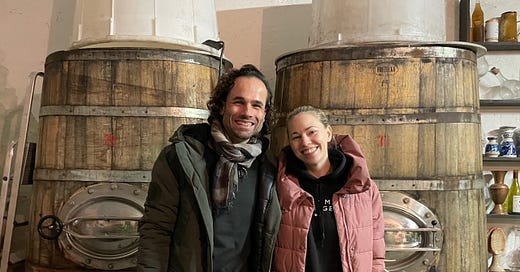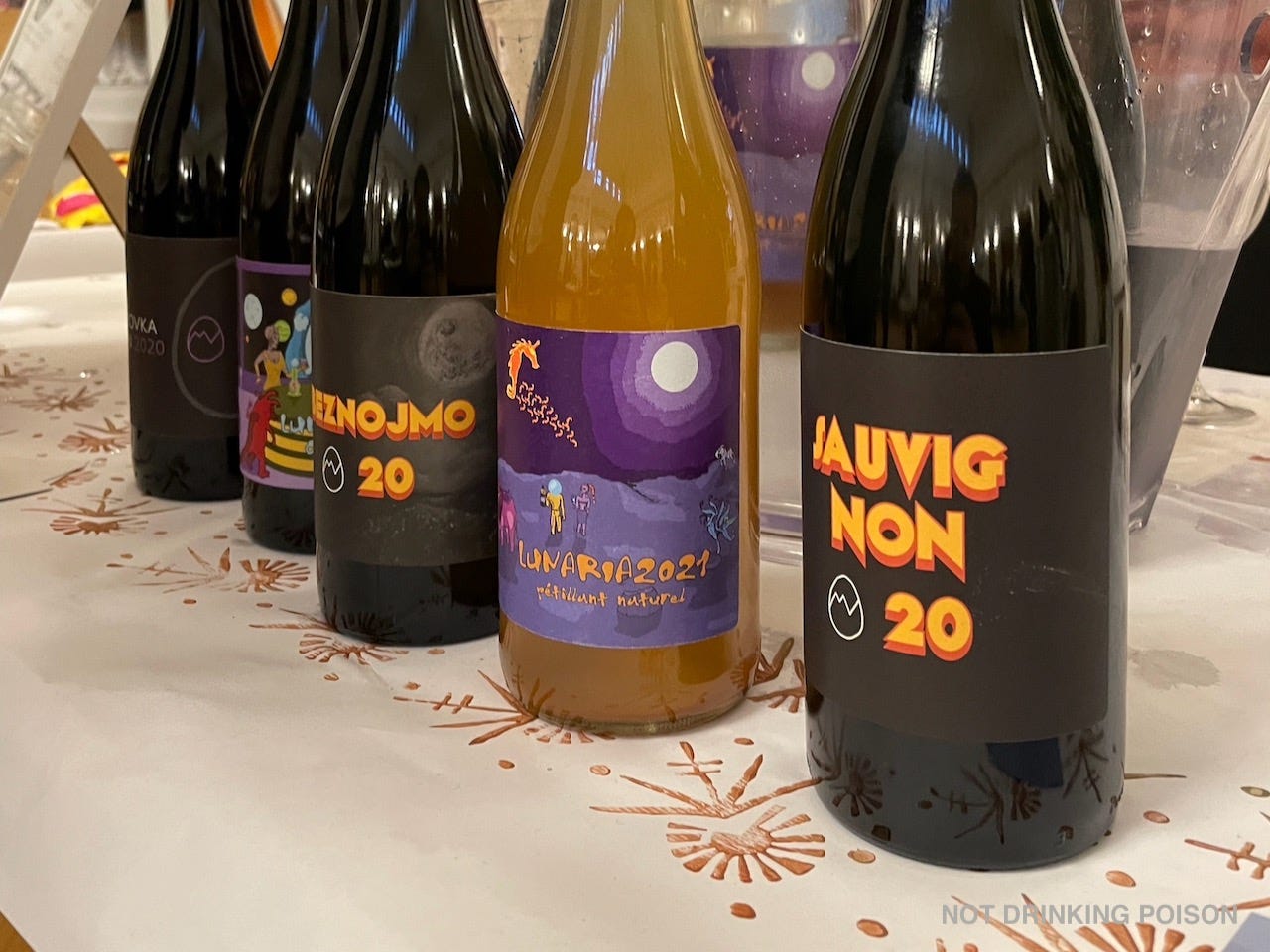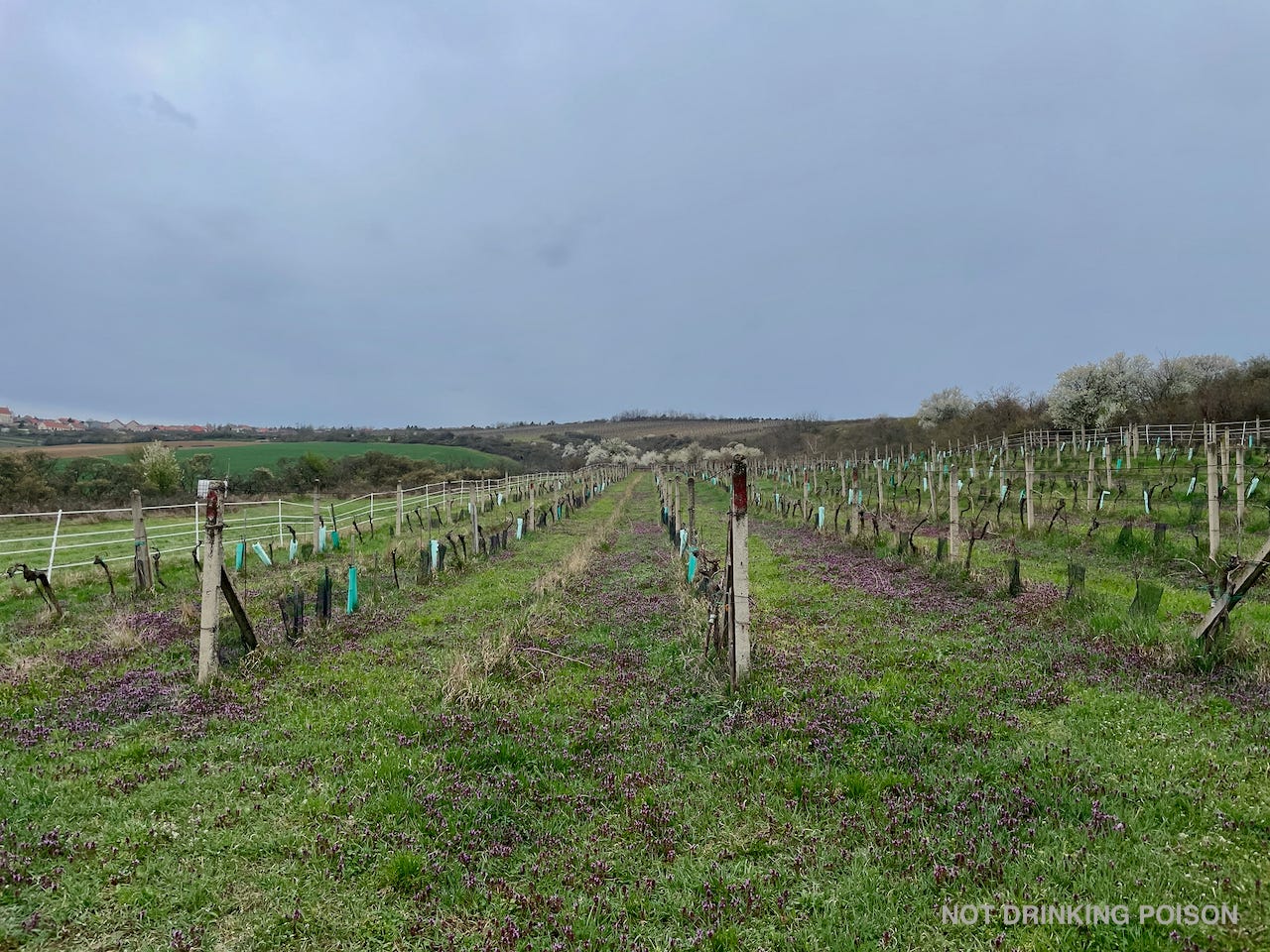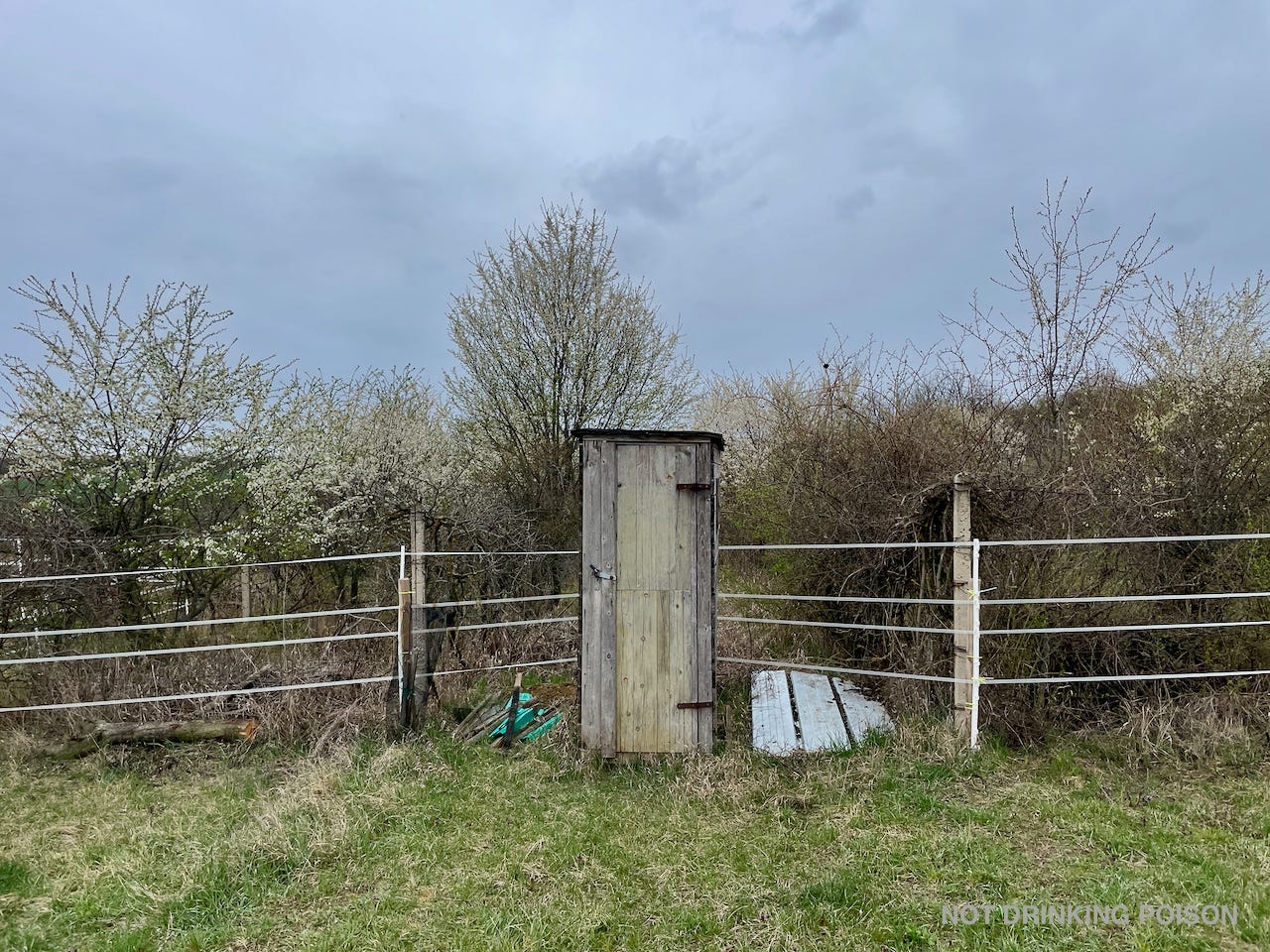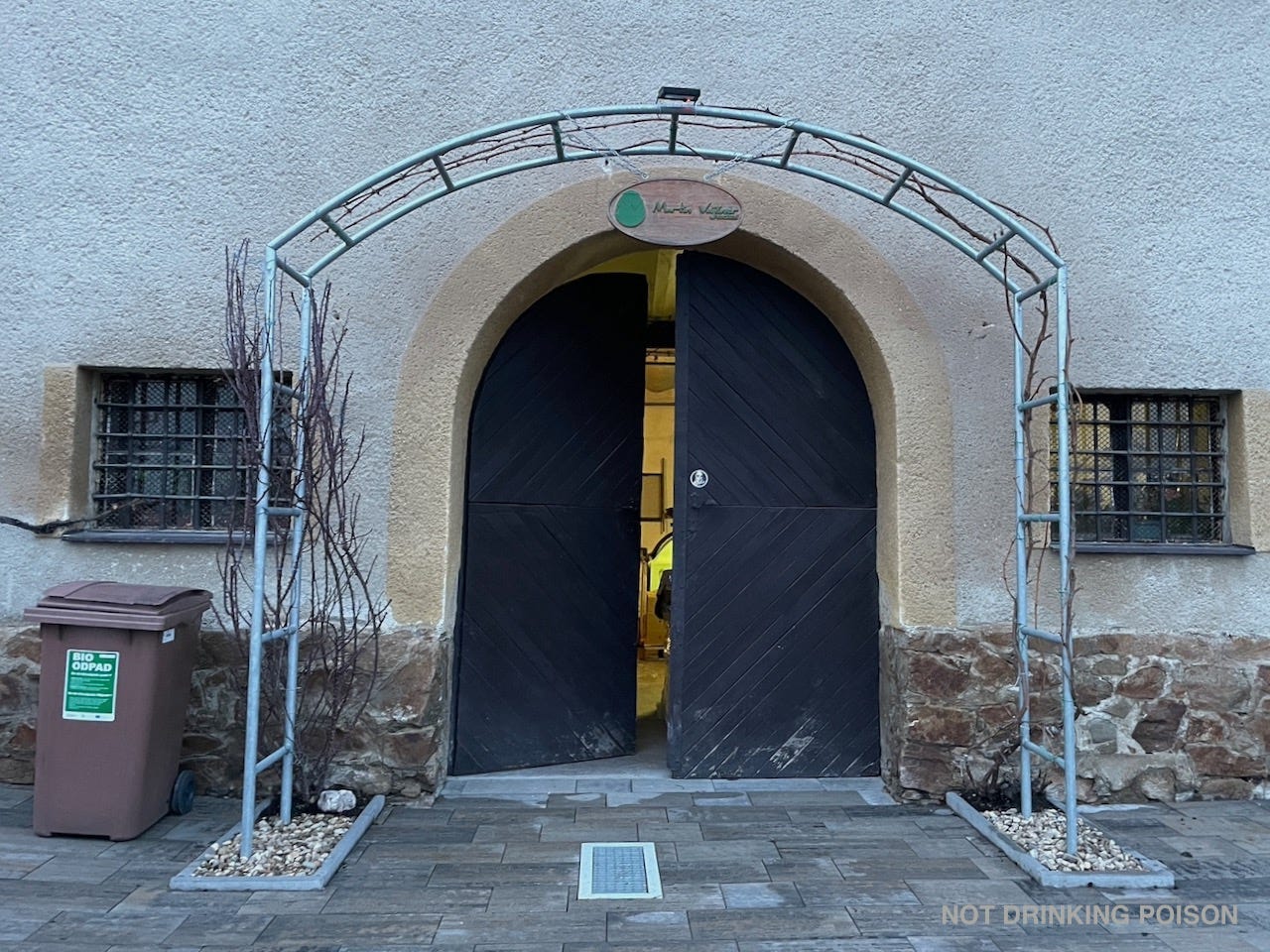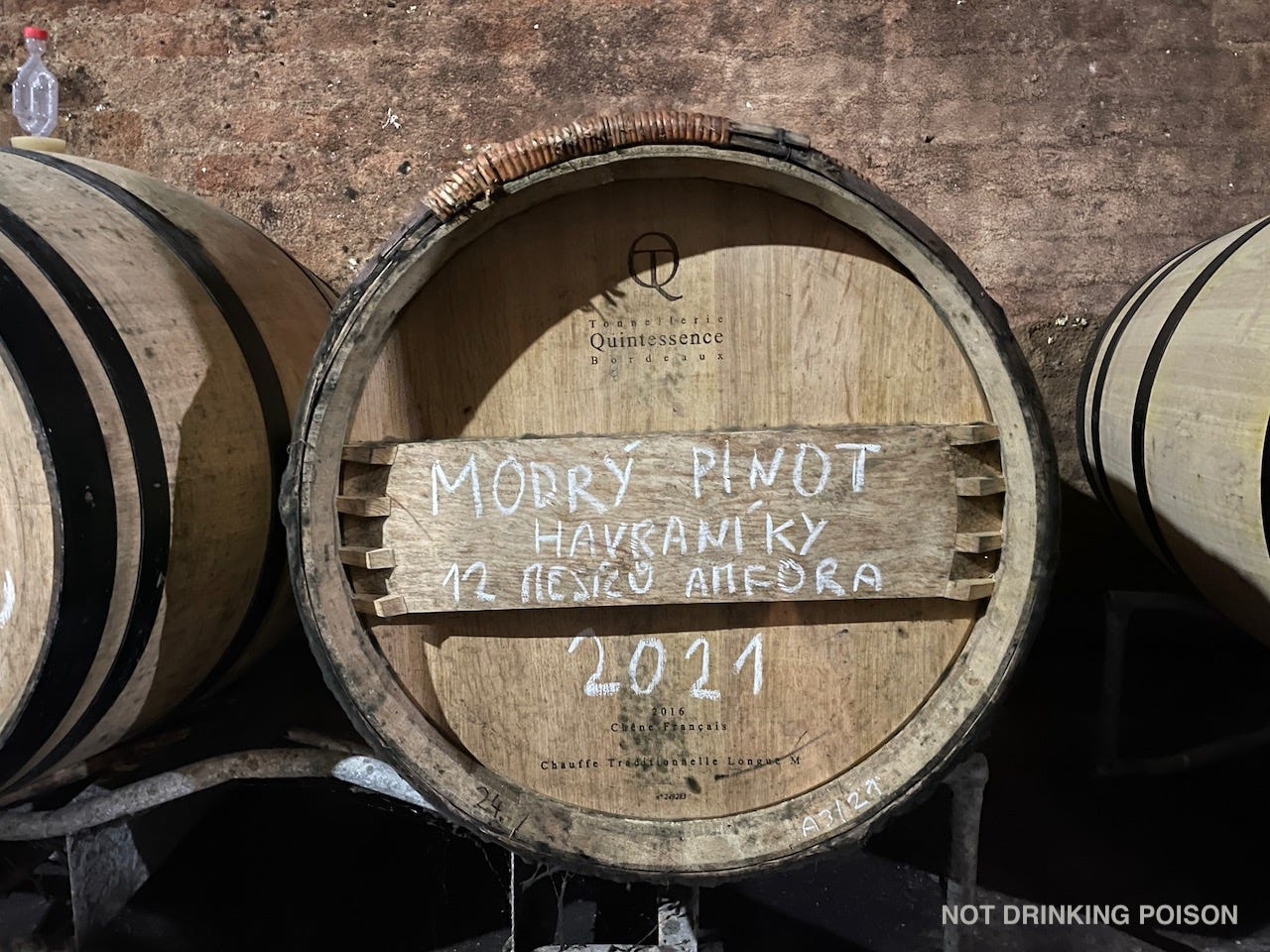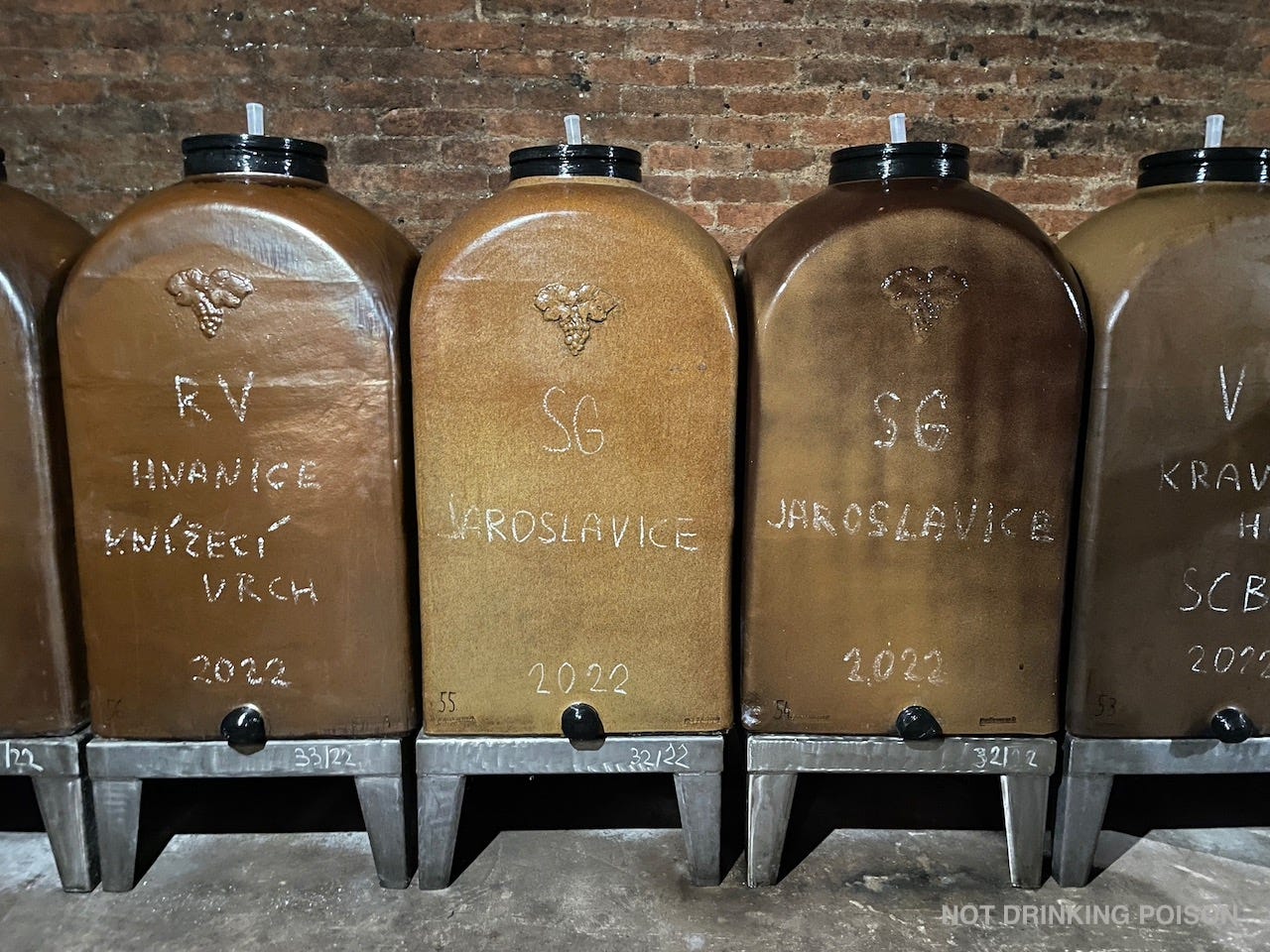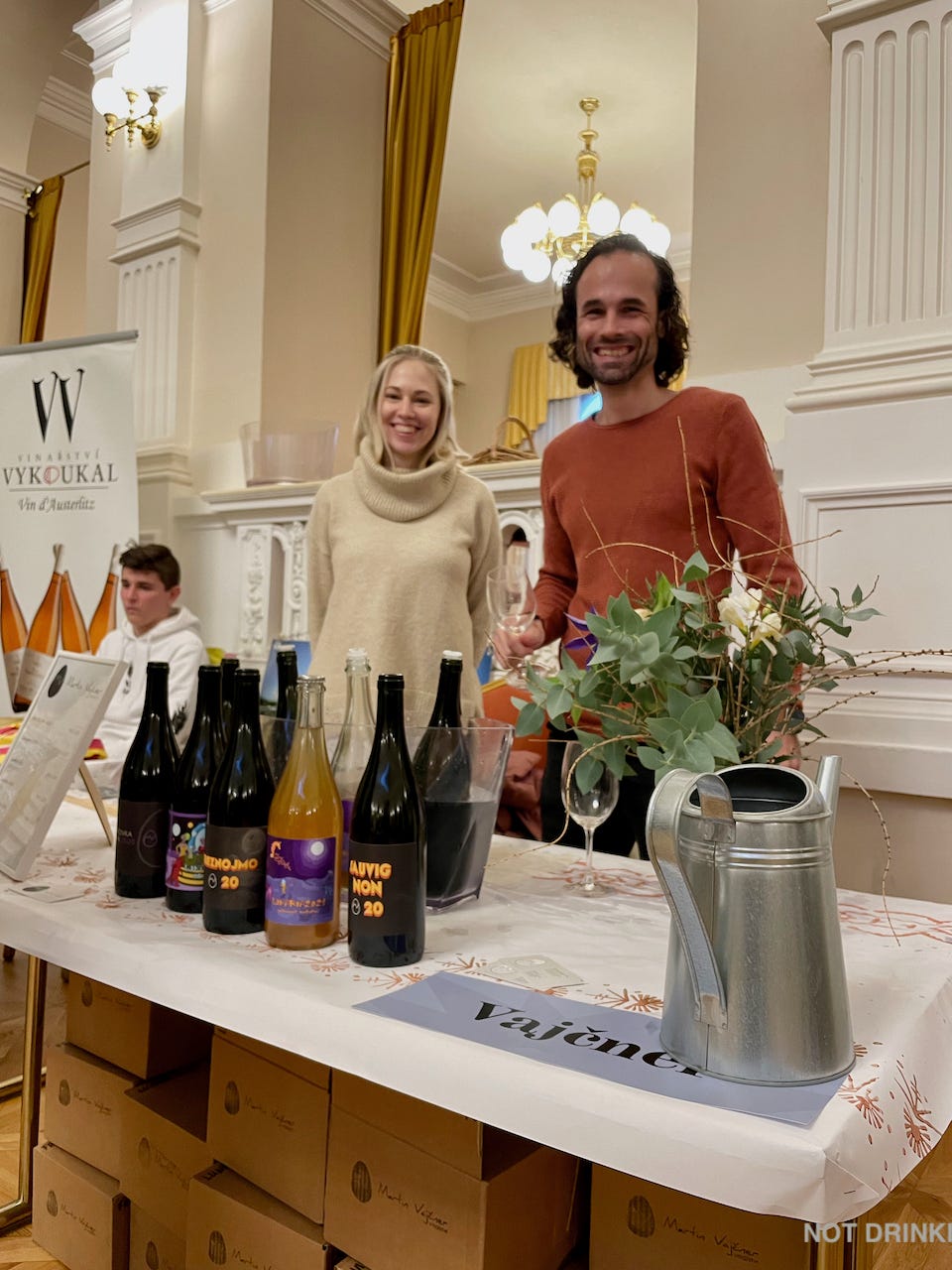Znojmo's Zero-Zero Virtuoso: Martin Vajčner
Moravian amphora, year-long macerations, and more: former viticultural researcher Martin Vajčner is raising the bar for radical natural wine in the Czech Republic.
Based near the town of Znojmo (pronounced znoy-mo) at the westernmost limit of viticultural Moravia, Martin Vajčner1 is a vigneron whose abiding humility and relatively recent debut as a winemaker belie a prodigious degree of experience.
For eleven years until resigning in 2022, he worked as viticultural research director for the Czech Republic’s ministry of agricultural in Znojmo, during which time he converted certain vineyards belonging to the state to organic agriculture. His father led a career as director of Znovìn Znojmo, among the largest conventional wineries of the Czech Republic, but Martin credits his former professor Jaroslav Osička and neighboring vigneron Petr Nejedlik of Dobrá Vinice with inspiring his own interest in natural wine.
I first met Vajčner at the Bottled Alive salon in Tabor in January 2022, stopping at his stand at random. I was instantly struck by the purity and sophistication of his wines, which are never filtered and which have seen zero sulfite addition as of the 2020 vintage. Two visits with Vajčner in 2023 have only confirmed my initial impression of the arrival of a world-class talent, marked by a passionate curiosity and a confident, free spirit in vinification.
Quick Facts
Martin Vajčner created his own winemaking project in 2018, consisting of organic négociant purchases supplemented by tiny yields from a small rented parcel he recovered from abandonment on the lower slopes of a local ridge known as Kravi Hora.
The years since have seen a flurry of further vineyard acquisitions, such that as of 2023 Vajčner farms 5.3ha - organically, with minimal spraying and almost zero copper use. As of this year, weather permitting, he plans to phase out négociant purchases entirely.
Grapes farmed include grüner veltliner, welschriesling, riesling, sauvignon, pinot blanc, mülller thurgau, chardonnay, blaufrankisch, pinot noir, zweigelt, alibernet, and saint laurent.
A maniac for geological nuance, Vajčner considers the particularity of the Znojmo region to be its site as the meeting point between the Bohemian massif and the Western Carpathians. Depending on the site, his soils feature granitic and quartzic sandy sea sediments from the former, or heavier clays and river sediments from the latter.
Vajčner’s cellar work is sensationally forward-thinking, featuring extensive employ of Czech Republic-made amphora from the 1990s, custom made qvevri from local clays, and year-long macerations. Direct-press whites typically macerate for 12-24 hours and see foulage before pressing. Almost everything is processed whole-cluster.
Besides his various amphorae, Vajčner employs a range of used oak and acacia barrels from France, Hungary, Austria, and Slovenia for aging, often passing wines from amphora to oak for an additional year of elevage. He practices minimal debourbage, and no batonnage.
Many of his labels feature an icon of an egg: this refers not to egg-shaped aging containers (which he does not use) but to his own last name, which sounds like Czech for “egg man.” It is a derivative of the German “Weinschnitts,” or “vine cutter.” Vajčner’s family trace their viticultural roots in the region back to 1636.
Vajčner’s range divides broadly into terroir-based varietal wines, generally featuring black labels with orange and yellow truck stop lettering (inspired by signage at the entrance to the town of Znojmo), and experimental multi-varietal blends, often one-offs, which often feature gnarly head shop imagery created by his friend Dante Minutello of justWINE in Brno.
If, like me, you long hesitated to delve into Czech Republic wine for lack of awareness of stratospherically good, north star-type examples, Vajčner’s work should get you oriented straight away.
ANOTHER MORAVIA
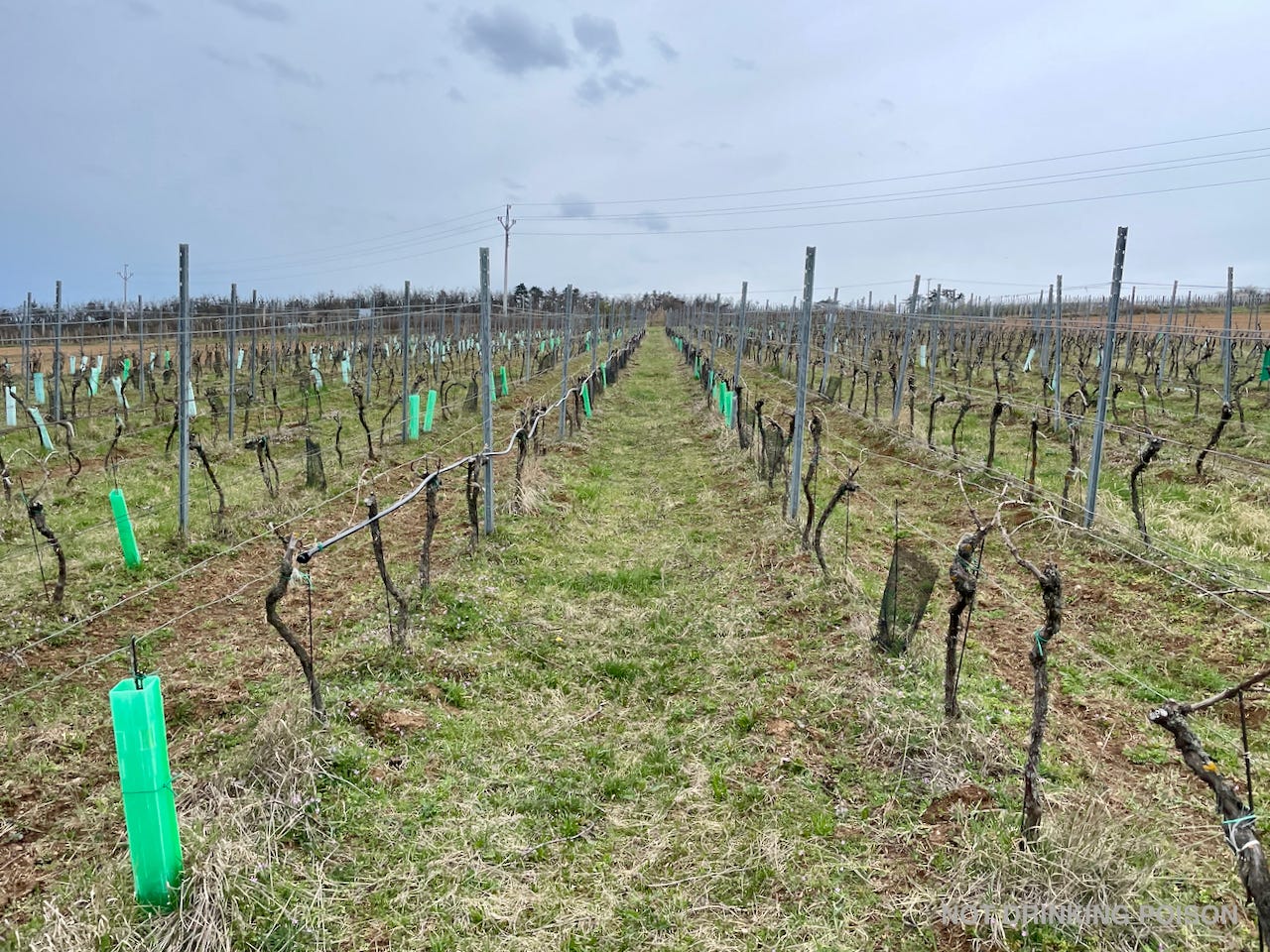
“Maybe we will go to Kravi Hora,” says Martin Vajčner as we return to his immense SUV. “It will be depend on the roads, because it was raining the last few days.”
We’re leaving the first stop on a tour of his parcels, a recently-acquired isolated half-hectare of pinot blanc, sauvignon, and pinot noir on a gentle, windy slope of cambrian quartzic clays in Dobšice (pronounced dob-sheet-zay). He says he loves the parcel because it requires little work - unlike Kravi Hora, which he acquired in 2018 in a state of abandonment.
It is my second visit to Vajčner in just over two months, which for the town of Znojmo is possibly some sort of tourism record. Despite being a mere ninety-minutes’ drive from Vienna, there is little exchange between Znojmo and the adjacent Austrian region of Weinviertel. Znojmo is also somewhat removed from the rest of viticultural Moravia, situated at the southwestern-most tip of Czech Republic winemaking.
Vajčner credits the potential complexity of the region’s wines to its history as an ancient confluence of sedimentary river terrain and marine granitic quartz. I know only that the first impressive Moravian wines I ever tasted - the early 2010s work of Dobrà Vinice, tasted in 2015 - came from beside Znojmo, and so do Vajčner’s own jaw-dropping wines.
His sauvignons possess a unique marriage of salinity and limber muscle, like enlightened northern cousins to certain classics of Alto Adige, while his gossamer touch with blaufrankisch, pinot noir, and zweigelt splits the difference, stylistically, between Fred Cossard and Claus Preisinger. Grüner veltliner and riesling also shine here, in Vajčner’s hands, yielding coiled, savory, pepper-inflected whites of astounding class.
“It’s okay, we can go in the vines,” says Vajčner, as we traverse the quartzic sandy granite ridge of Kravi Hora, where he points out several organic parcels farmed, in recent years, by two of his friends. “But we must hurry, because it starts to rain. I’ve gotten stuck here twice!”
On a dime Vajčner turns the tank-like black SUV down a row of his neighbor’s vines, whose unpruned canes whip the paintwork for a few hundred meters.
Vajčner’s south-facing Kravi Hora parcel, planted in 1970, is guarded from wildlife by fencing, like just about everywhere I’ve been in the Czech Republic. He is abashed by it, but recognizes its necessity. Unlike other vineyards further up the ridge, Vajčner’s parcel is bordered on three sides by thick hedges harboring all manner of rabbits, hares, and wild boar. In fact, the far end is not a hedge, but rather another abandoned parcel.
“Six years ago, when I took it over, this vineyard looked like that,” he says, grinning. “I had lots of energy then, I had time to clear the trees. Now, with all my new vineyards, it would be impossible for me.”
He’s had limited success, so far, replanting the grüner veltliner parcel’s missing vines to sauvignon and riesling. The plantings have had difficulty competing with the extensive root network of existing vines. During a recent excursion to Styria, he got a tip from Sepp Muster for a rootstock that he hopes will yield better results in the future.
INSPIRATIONS
Vajčner’s manifest enthusiasm and curiosity for his métier draws me back to Znojmo as much as my own curiosity about the local terroir. An accomplished viticultural researcher, he speaks of farming and geology with a sophistication that far surpasses his serviceable English. His own winemaking is informed by a love for the wines of the Jura; he cites the work of Maison Overnoy-Houillon and Domaine Buronfosse as particular inspirations.
My first visit to Vajčner’s cellar in January was nothing short of revelatory. He already practices and knows by heart all the little gestures that many veteran natural winemakers in France have taken years to adopt: short maceration of direct-press whites to allow yeast populations on skins to thrive, minimal debourbage for maximum contact with fine lees, zero batonnage to retain CO2, etc. Pumping generally occurs only once, at assemblage before bottling.
Meanwhile, Vajčner’s embrace of year-long macerations (of pinot noir and blaufrankisch, among others) puts him in the rarefied company of vignerons like Emile Heredia, Hans-Peter Schmidt, Les Frères Soulier, or Romain Verger. (Variations on the practice abound among that list, however.) His amphora are of a type I’ve never encountered elsewhere: glazed ceramics from a Czech company called Keramika Poštorná that only produced amphora of this size back in the 1990s.
"I do pigeage at the start of fermentation, and during fermentation,” he says of his year-long macerations. “Then I seal the amphora with wine from another tank, and leave it alone for a year. Because if I open it before, I’m sure to find something I won’t like, and it would be hard to leave it alone.”
As it is, Vajčner evinces a joy easily the equal to his guests, each time we descend to the cellar. He has a system, he says: he only tastes his wines in the company of visitors.
Such wise habits, I’d wager, are the inheritance of a viticultural family dating back to the 17th century. But the dynamic does little to explain Vajčner’s early and virtuosic embrace of natural winemaking. I mention as much on my first visit to Vajčner and his fiancée Monika.
“My grandfather and my father taught me how to make wine,” he says. “But Petr Nejedlik [of Dobrà Vinice] taught me natural wine.”
“On our first date,” adds Monika, laughing, “we drank a bottle of Dobrà Vinice.”
OUR WORK AND OUR HOBBY
After verifying the current on the electric fence surrounding his parcel at Kravi Hora, we depart to a vineyard of welschriesling near Hnanice, planted in 1993 within the grounds of Podyjí National Park, where Dobrà Vinice maintain many vineyards.
“I think we will see my father,” he says as we pull up to the roadside below the path leading into the park. “He spent his whole working life in one of biggest wine companies in the Czech Republic, Znovin Znojmo. Now that he’s retired, he helps me in vineyard.”
Vajčner père is at the bottom of the parcel when we arrive, attaching canes. He wears a knit hat resembling a tea-cosy, the sort of eminently practical thing one throws on when one is not planning to appear anywhere near public or the media. Father and son exchange a few words in Czech, and Vajčner explains in English that this west-exposed, wood-bordered parcel is always ten days behind the rest of his vineyards. Last year it was subject to a bad attack of oidium; we step over the remnants of rejected fruit still attached to the cuttings that litter the row as we pace to the top of the parcel, leaving his father below.
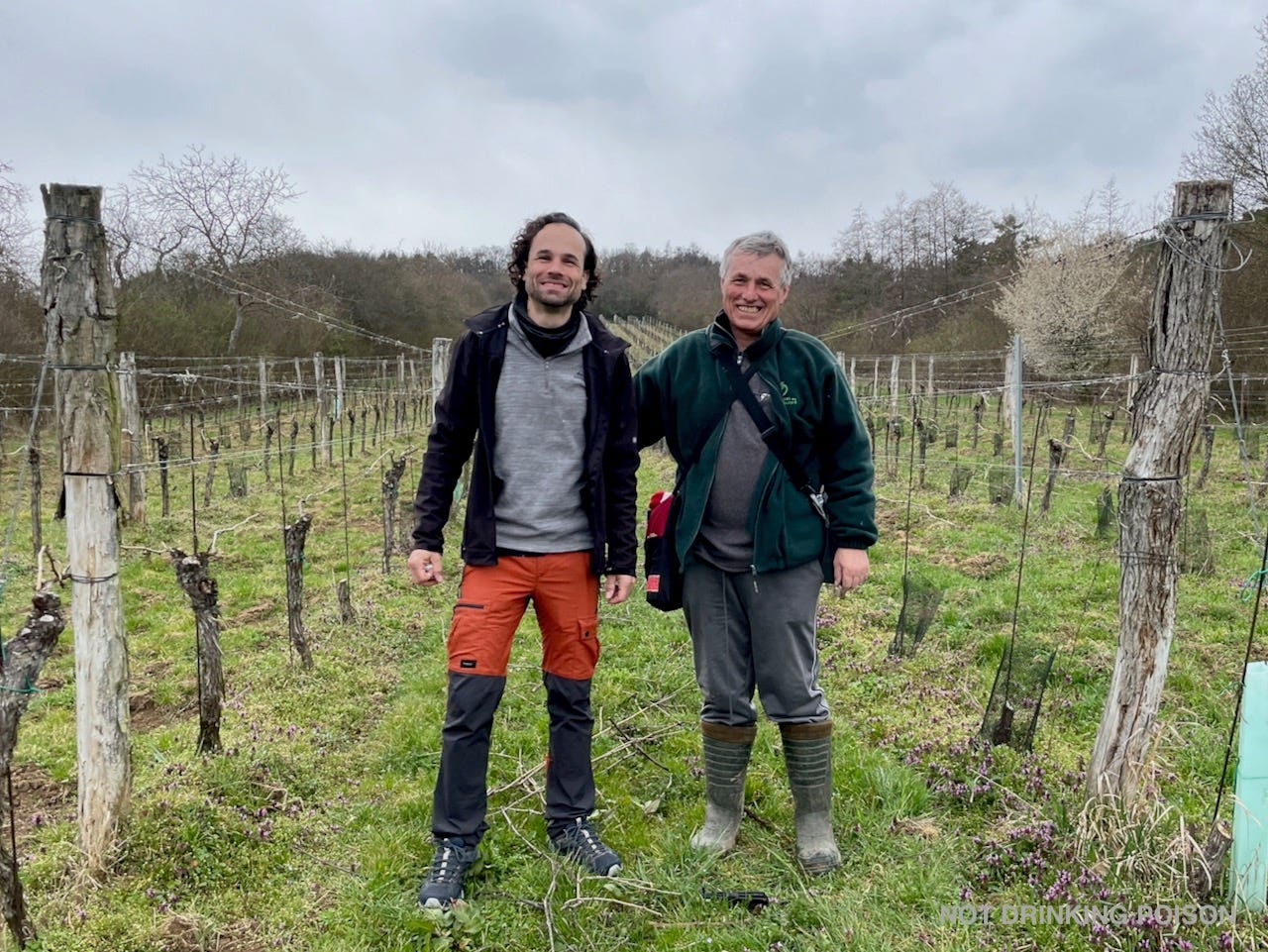
“Is he a good employee?” I joke. “He must be tired of vineyard work by now.”
“I am from a winery family,” explains Vajčner with a smile, bounding uphill with ease. “It is our work and it is our hobby.”
Martin & Monika Vajčner
Nádražní 12
67125 HODONICE
Czech Republic
FURTHER READING
Lucie Kohoutovà’s profile of Martin Vajčner for the Jenny & François Import website is a pleasure to read and contains loads of great details.
Tasting Report: Bottled Alive 2022, Tábor.
Pronounced vye-chner.

